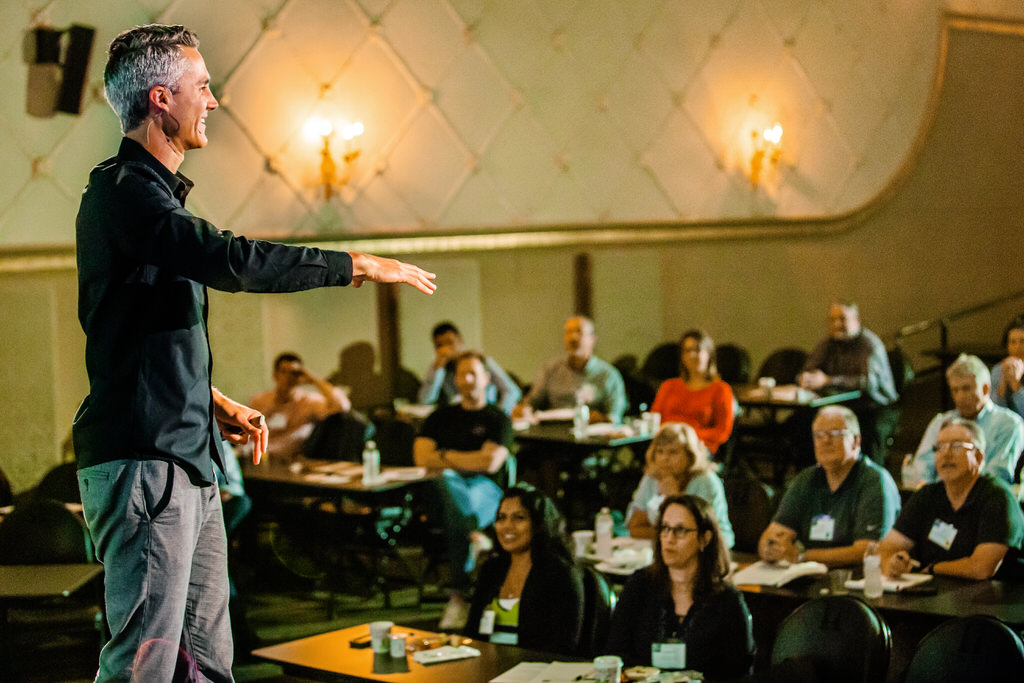Experts that know how to nail a marketing strategy for architects are hard to come by. So we feel incredibly privileged to talk to Enoch Sears – an experienced architect from California, who founded Business of Architecture, the world’s leading consultancy that helps architects create successful firms.
He is also the author of the book “Social Media for Architects” and the host of “The Business of Architecture” podcast where he interviews prominent professionals in the field.
Enoch has helped many architects worldwide to optimize their workflow, master digital marketing techniques, and reach new heights in their businesses. And now, he shares a bit of his profound experience with the ArchiCGI team and our readers. Read on to learn Enoch’s story of founding the world’s leading architecture business consultancy, and to get some ultra-useful tips on making your firm flourish!
How and why did you decide to teach architectural business?

I started Business of Architecture in 2011 as my personal exploration into running a successful architecture firm. At that time, I knew how to be an architect but what I didn’t know was what made an architecture firm successful as a business. I didn’t have the liberty or cushion of having a large list of existing clients, I was starting my firm from scratch. Unfortunately, I didn’t know anything about leadership, marketing, selling, financial management, or project management.
I knew how to be an architect but what I didn’t know was what made an architecture firm successful.
As a result, I shut down my own firm after less than a year because it wasn’t living up to my aspirations. And I didn’t know how to get it there. So I consulted every successful architect I knew, read everything available on the subject, and combined that with my own experience to develop what is now the SMART Practice Method – a systematized and methodical way for running a successful architecture firm.
Who are the most famous of your graduates?
We’ve worked for hundreds of firms both in the United States, Canada, the UK, South Africa, and elsewhere. A few to mention for the quality of their work are Work Program Architects and Aamodt Plumb Architects (US) as well as Nico Van Der Meulen Architects and 2610 South Architects (South Africa).
Does every architect need a marketing strategy?
Many small architecture firms are able to survive on referrals alone. However, this puts these firms at heightened risk of market fluctuations, and they often get trapped in a certain project type.
Are there many firms that use a well-thought-out marketing strategy for architects?

Most firms with 20 or more employees have a clear marketing strategy. As for firms with 20 or fewer employees, they often do not have a marketing strategy. Sometimes, it is because they lack the time and resources to create it. But more often it is because they don’t know how to do it.
What are the 3 most common mistakes architects commit in their marketing efforts?
These 3 mistakes architects are not marketing, not marketing, and not marketing.
How can an architectural firm define the best marketing channels to invest in?
The best way is to look at what your competitors are doing that is working. The second strategy is to test what works and figure it out on your own. A third strategy, and the one we recommend, is to hire an experienced expert like Business of Architecture to grow your firm.
In your opinion, what is the most important secret of a successful architectural business?
Generally, the most successful practices are led by architects who have innately exceptional communication skills – they know how to work well with people and form long-term and lasting relationships.
Communication, leadership, and rainmaking are all skills that can be learned.
However, since most architects are introverts – myself included – this is difficult. Fortunately, communication, leadership, and rainmaking are all skills that can be learned.
Do your clients often use CGI for marketing?

Yes, computer-generated images are very important for both conceptualizing projects and helping clients to understand designs. CGI can also be used to show experimental projects that aren’t built yet.
Present your architectural project like a work of art with AI-powered CGI
How the pandemic affected the architectural business?
Our clients are seeing residential and healthcare inquiries increase. While other markets, such as retail, restaurant, and hospitality, have decreased.
What do you think the future holds for architectural marketing?
In the future, we’ll see more firms using digital marketing to gain visibility and win substantial work.
What advice would you give to architects for the business in 2021?
To architects who are currently in practice and also run a business – make sure that you treat your business like an entity separate from the architecture. Invest in your business as you would invest in your design software – it will pay dividends.
Invest in your business as you would invest in your design software – it will pay dividends.
We are very grateful to Enoch for sharing his story and explaining some inner workings of architectural marketing. And we wish him great success in helping architectural businesses to find their clients, prosper, and make a difference with their solutions.
We hope that reading this interview with Enoch Sears brought you encouragement, inspiration, and some actionable tips. Or, that it helped you decide to learn more about creating a marketing strategy for architects – from Enoch. Nothing beats knowledge and a good strategy!
Get your project estimated in just 1 hour - fill out this brief!
And for high-end marketing imagery for your projects, contact ArchiCGI for 3D rendering services. We’ll provide you with visual materials that’ll help you realize the most ambitious marketing efforts!

Catherine Paul
Content Writer, Editor at ArchiCGI
Catherine is a content writer and editor. In her articles, she explains how CGI is transforming the world of architecture and design. Outside of office, she enjoys yoga, travelling, and watching horrors.



Comments
Kamrul